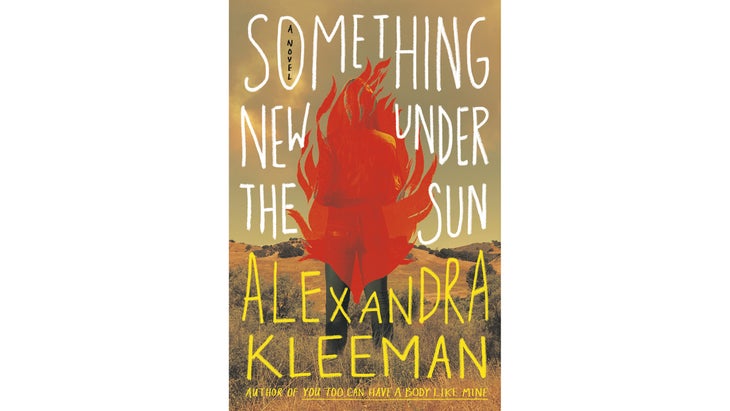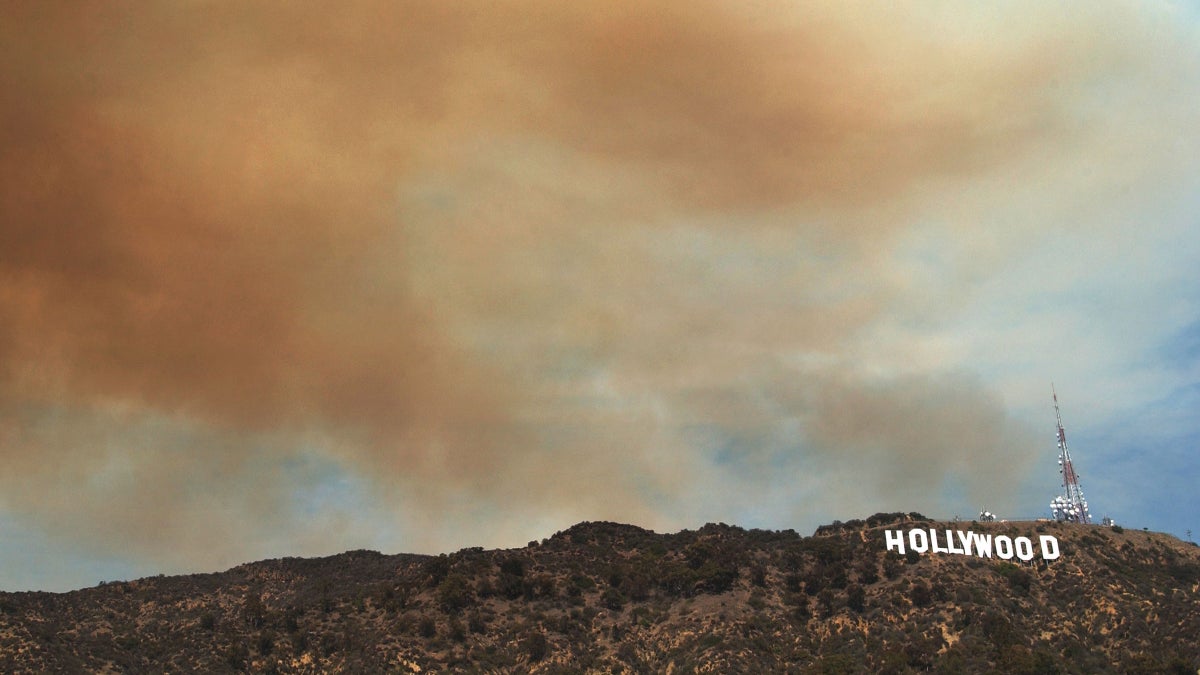No products in the cart.
Outdoor Adventure
‘Something New Under the Sun’ Is a Climate Change Mystery Set in Hollywood
We’re relaunching the Outside Book Club this week, and to celebrate we’re publishing a series on how the booming genre of climate fiction is helping us see our changing planet in a new light. You can learn more about the book club here, or join us on Facebook to discuss our October pick, Bewilderment, a new work of climate fiction by Richard Powers.
At one point in Alexandra Kleeman’s new novel, Something New Under the Sun, the protagonist joins a crowd at a film production studio as they watch catering staffers struggle to keep a large tent from toppling over. “He’s surprised at how many of the onlookers seem actually happy, actually carefree,” Kleeman writes. “It’s fun to watch something collapse, as long as you’re not beneath it.” Likewise, it’s queasily fun to read Kleeman’s book, a propulsive mystery about a disaster-ridden world only a little different from our own.
Set in either an alternate universe or the not-so-distant future, Something New Under the Sun follows novelist Patrick Hamlin on a trip to California to assist in a movie adaptation of his latest book. He spends his days working with prickly actress Cassidy Carter and a slate of typical Hollywood characters, including sweet stoner production assistants and a pair of glossily suspicious producers. Everyone’s drinking WAT-R, lab-made water that has replaced much of the real thing in the drought- and wildfire-ravaged state. At first, the synthetic water seems like a tame bit of window dressing compared to other zany details in the novel: Cassidy does advertisements for an acne cream that causes seizures, and internet ads read, “How to make $500 a day using the body debris you’d usually throw in the trash can!” But Patrick soon starts to notice something amiss about WAT-R, his film colleagues, and the whole seedy system that links the two industries.

Something New Under the Sun winningly combines mystery with speculative fiction but reads almost like a contemporary realist novel. Much of the believability is due to Kleeman’s sharp eye for the weirdness of consumerism, and especially her ability to satirize a certain type of fancy person with laser precision and humor. At the home of a producer named Brenda, where every furnishing is a pristine shade of white, a production assistant marvels over the ecru catering uniforms and eggshell sofas: “I don’t even know if my untrained eye is capable of distinguishing them all…but to Brenda it must be like a rainbow. I’m like a worm gazing up at the stars.” In another scene, Patrick overhears a radio program about urban wildlife encounters in which a woman recounts being attacked by a pack of raccoons while trying to return Nikes to a Foot Locker. “I think it was because of the leather scent they spray in these things, just too completely real,” she says. “But if it can fool a wild animal, it must be a high-quality product.” Meanwhile, the ominous WAT-R comes in varieties like Fruit Snack Quenchers and Feminine Mystique. It all sounds ridiculous until you realize that in our world, aesthetically pleasing disaster preparedness kits exist.
The novel’s interest in the mundane experience of catastrophe stands out in an increasingly crowded field of books that could be described as climate fiction. In Something New Under the Sun, the specifics of the imagined crisis are not the point, though it’s not far-fetched to imagine some desperate solution will be necessary to address water shortages in the West (or, rather, even more desperate than we’re already seeing). Instead, the book seems to grapple with the question of how humanity deals with horrifying, large-scale change—and particularly, how complacency can outlast even the most obvious portents of disaster. Patrick occasionally worries about his own apathy toward the increasingly obvious warning signs around him, but he has more immediate concerns: a stressful job, appointments to make, and a seemingly constant case of dehydration that keeps him chugging plastic bottles of WAT-R. If there’s one thing he has time for, it’s rationalizing why he doesn’t have time for existential panic just yet. Driving past a wildfire on the highway, he thinks, “It’s not really an emergency…if you can drive around it. An emergency would be everywhere you looked, inescapable; some long-submerged animal intelligence would recognize it with fierce instinct.”
But this is a book about climate change, so of course the real problem is corporate wrongdoing. Cassidy insists on drinking real water because the synthetic version has a disturbing taste, and there’s increasing evidence that WAT-R may have adverse health effects. WAT-R employees steadfastly defend their product: “Water has been through the butts of dinosaurs and the blood of the diseased. The water you drink may have been in the mouth of your worst enemy, and you would never know,” one says earnestly. “Water is secondhand, but our WAT-R has never been used.” But the idea of manmade water is a red herring for the real horror in the book—the questionable regulation and marketing of such a product in a capitalist society, and the idea of commercialized solutions standing in for systemic change as climate change remaps access to resources around the world.
It all adds up to a perfect portrait of capitalist complacency in the face of climate change.
Something New Under the Sun is a memorable addition to the canon of fiction about climate change, thanks to the same Hollywood tricks that fuel its plot. Though most of the novel is told from Patrick’s perspective, Kleeman will sometimes take a more cinematic approach, zooming out from the scene at hand and taking the reader somewhere else entirely. At one point, we land in Cassidy’s empty seven-bedroom home, where a multitude of self-regulating cooling appliances render it “a half-living thing, multi-lunged and plushly organed, steeped in electricity and suspended in a continual sigh.” In some scenes, Kleeman even scans through geologic time, to a primordial past and a future reclaimed by wilderness, where her characters are completely forgotten. This narrative device offers an uncomfortable perspective: that our lives are all a blip in the grand scheme of things, but also that the choices we make in our present moment may have consequences much greater than we can understand.
Meanwhile, Kleeman’s depictions of WAT-R and the slick world of showbiz evoke familiar worries about authenticity and fakery and the ways we’re warping nature beyond recognition. At one point, a WAT-R employee toasts, “To Mother Nature, who sends us her rough draft so that we may perfect her grammar!” A producer brags to Cassidy about new movie backgrounds, better than even the best sets made by hand, that can be engineered beyond perfection in postproduction. “Reality was easier to override than ever, and the substitute was much more potent, much harder to forget,” Kleeman writes. It all adds up to a perfect portrait of capitalist complacency in the face of climate change: we continue insisting that the world we’ve built around ourselves is better than the one we were given, that we’re still in control, even as it becomes increasingly clear that our future holds no guarantees.
Source link

